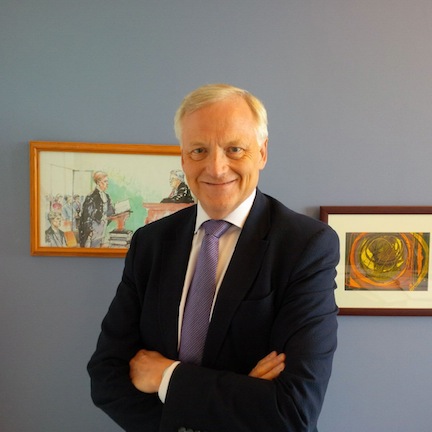Co-operation among counsel and advanced preparation are among the key themes in The Advocates’ Society’s new
best practices for civil trials.

“I think there was a realization that a consensus model would be a way to effect the change that we need to make,” says Stockwoods LLP’s Brian Gover, chairman of The Advocates’ Society’s civil trials task force that came up with the 16 best practices for civil litigation in Ontario.
Last week, the organization released the best practices document as part of an effort to boost efficiency in civil matters across Ontario. It launched the task force following Ontario Superior Court Associate Chief Justice Frank Marrocco’s challenge to the organization to study the issue and seek a better way forward. The task force then undertook research into best practices and, in January 2015, The Advocates’ Society held a symposium on civil trials that included more than 100 members of the bench and bar.
According to the principles underlying the recommendations, the best practices are to go beyond the minimum standards of the Rules of Civil Procedure. They also suggest lawyers “should seek to cooperate with one another in the interests of keeping the civil process as fair and efficient as possible.”
According to Gover, there was strong agreement among the various parts of the bar on what needs to change. “I’d say there were differences of opinion on minor points but we did reach agreement on so much,” he says.
The specific best practices cover case management, trial planning and management, the use of documents and technology, and expert evidence. On case management, they urge fixing the trial date and length as early as possible in order to focus the parties and narrow the issues; setting reasonable and meaningful deadlines with consequences, included costs, for missing them without adequate justification; and avoiding having a case management judge who conducts the trial also handle settlement conferences. Other recommendations include allowing judges and masters to assign matters to case management of their own accord with counsel also able to request it unilaterally. As for timelines, the best practices say a case management conference should be available within 30 days of a party requesting one. They also encourage flexibility through options such as holding the case conference via phone or video.
The focus on case management, according to Gover, reflects the negative attitude the task force heard from many judges about the usefulness of motions. “That’s why we had to reboot case management,” he says.
When it comes to trial planning and management, the best practices raise the idea of having equal fixed time allocations per party within the trial with limits for both oral opening and closing submissions. In addition, they suggest the court should assign a trial judge to the case at least 60 days in advance of the first day of trial who should then conduct a trial management conference as soon as possible.
The best practices for documents and technology include allowing potential out-of-town witnesses to testify via video if possible. And on expert witnesses, the guidance looks down on the idea of waiting until the trial to challenge expert qualifications. “I think we have to realize that we’re front ending a lot of the work,” says Gover, who expresses confidence about the feasibility of the practices overall. “I think it is realistic,” he says. “It’s dependent on judges holding lawyers to the best practices,” he adds, citing the potential for cost consequences.
“We have been told that the court is strongly supportive of this initiative,” says Gover, who suggests the best practices may be useful for lawyers’ and law firms’ marketing efforts. “It may even be an effective marketing tool for lawyers.”

 “I think there was a realization that a consensus model would be a way to effect the change that we need to make,” says Stockwoods LLP’s Brian Gover, chairman of The Advocates’ Society’s civil trials task force that came up with the 16 best practices for civil litigation in Ontario.
“I think there was a realization that a consensus model would be a way to effect the change that we need to make,” says Stockwoods LLP’s Brian Gover, chairman of The Advocates’ Society’s civil trials task force that came up with the 16 best practices for civil litigation in Ontario.